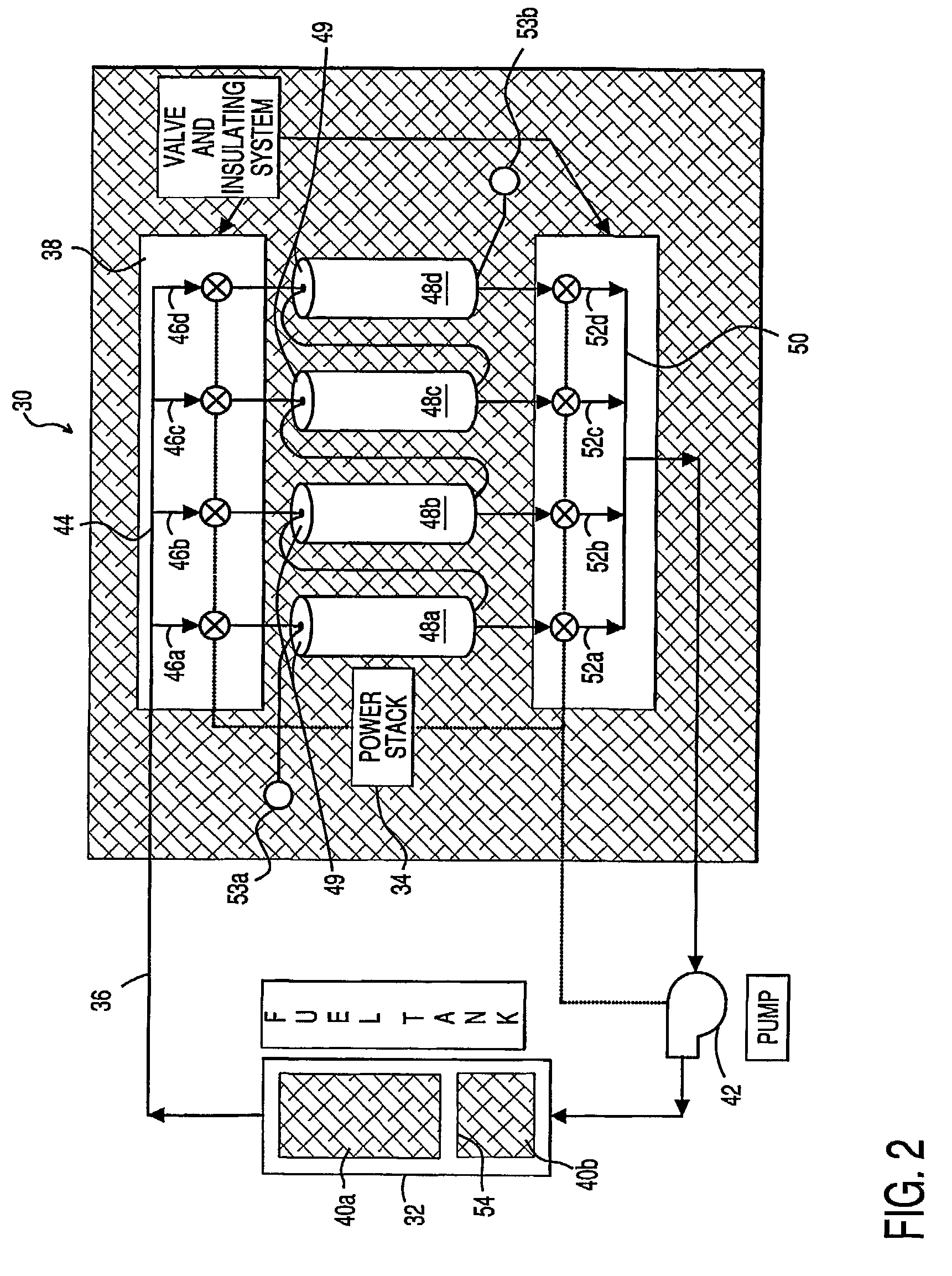Fuel containment and recycling system
a technology of fuel containment and recycling system, which is applied in the direction of cell components, secondary cell maintenance/maintenance, maintenance/service of primary cells, etc., can solve the problems of wasting space, major obstacle to providing a commercially viable system, and system never achieved commercial success, etc., to achieve convenient, economical and environmentally friendly effects
- Summary
- Abstract
- Description
- Claims
- Application Information
AI Technical Summary
Benefits of technology
Problems solved by technology
Method used
Image
Examples
Embodiment Construction
[0039]The low energy density of typical metal air batteries has prevented their practical use in high rate applications such as, for example, powering motor vehicles. The present invention overcomes the shortcomings in the prior art by using a single reservoir container to dispense the fuel and to collecting and reconsituting the electrochemical reactants (i.e., mostly metal oxide) in a manner similar to secondary battery systems. The hybrid configuration (i.e., refuelable / rechargeable) provides a long discharge life (or high energy density), faster recharging capability leading to enhanced performance during discharge, and a longer cycle life.
[0040]The present invention embodies “fuel splitting” wherein multiple metal / air cell voltages are obtained with only one fuel source without short-circuiting the cells. As a result, batteries made with the cell configuration of the present invention can provide at least about 330 Wh / kg / 750 Wh / L, making them well suited as a power source for p...
PUM
| Property | Measurement | Unit |
|---|---|---|
| discharging current density | aaaaa | aaaaa |
| sizes | aaaaa | aaaaa |
| sizes | aaaaa | aaaaa |
Abstract
Description
Claims
Application Information
 Login to View More
Login to View More - R&D
- Intellectual Property
- Life Sciences
- Materials
- Tech Scout
- Unparalleled Data Quality
- Higher Quality Content
- 60% Fewer Hallucinations
Browse by: Latest US Patents, China's latest patents, Technical Efficacy Thesaurus, Application Domain, Technology Topic, Popular Technical Reports.
© 2025 PatSnap. All rights reserved.Legal|Privacy policy|Modern Slavery Act Transparency Statement|Sitemap|About US| Contact US: help@patsnap.com



